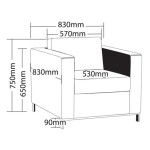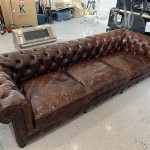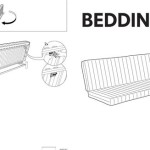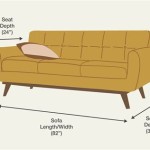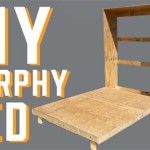How To Recover Leather Sofa Cushions
Leather sofas are known for their durability and luxurious look, but over time, even the most well-maintained leather can show signs of wear and tear. The cushions, in particular, may become flattened, lose their shape, or develop cracks and tears. A simple way to restore the look and comfort of your leather sofa is to recover the cushions. This process involves replacing the old cushion covers with new fabric, whether it be leather, fabric, or a combination of both. While it may seem like a daunting task, recovering leather sofa cushions can be achievable with the right tools and techniques, allowing you to breathe new life into your cherished furniture.
Gather Your Materials
Before embarking on the recovering process, it's crucial to gather the necessary materials. The following list will serve as a guideline for essential supplies:
- New cushion covers: Determine the desired material and color for your new cushions. Leather, fabric, or a blend can be chosen based on personal preference and the existing sofa style.
- Scissors: Sharp scissors are essential for cutting the new fabric to the correct size.
- Sewing machine: A sewing machine, preferably with a heavy-duty needle, is necessary for stitching the fabric together.
- Sewing thread: Choose thread that matches the color of the new cushion covers.
- Measuring tape: An accurate measuring tape is vital for taking precise measurements of the old cushion covers.
- Safety pins: Safety pins are helpful for temporarily holding the fabric together before sewing.
- Staple gun: A staple gun is required to attach the new fabric to the cushion frame.
- Staples: Choose staples that are compatible with your staple gun and appropriate for the thickness of the cushion fabric.
- Screwdriver: A screwdriver may be needed to remove the old cushion covers if they are attached with screws.
- Hammer: A hammer can be used to gently tap in the staples.
Having all these materials readily available will streamline the recovering process, ensuring that you have everything you need on hand.
Step-by-Step Guide to Recovering Leather Sofa Cushions
Once you have assembled the necessary materials, follow these steps to recover your leather sofa cushions:
- Remove the old cushion covers: Carefully remove the old covers from the cushions. For most sofa cushions, the covers will be secured with staples or screws. Use a screwdriver to remove any screws, and a staple remover or pliers to pry out any staples. Be cautious not to damage the existing cushion frames during this process.
- Measure the old cushion covers: Using a measuring tape, take precise measurements of the old cushion covers. Measure the length, width, and depth of each cushion. Note down the measurements for each cushion, as they may differ slightly.
- Cut the new cushion covers: Lay out the new fabric and use the measurements you took to cut the new cushion covers. Add a seam allowance of 1/2 to 1 inch to each side of the fabric. This allowance will be used for stitching the fabric together.
- Sew the new cushion covers: Using your sewing machine, sew together the cut fabric pieces to create the new cushion covers. Use a strong stitch and reinforce the seams with backstitching. If the fabric is thick or heavy, consider using a thicker sewing needle.
- Attach the new cushion covers to the frames: Place the new cushion covers over the cushion frames. Use the staple gun to secure the new fabric to the frames. Start at the center of each side and work your way outward, ensuring that the fabric is pulled taut. Use a hammer to gently tap in the staples.
- Trim excess fabric: Once the new cushion covers are securely attached to the frames, trim any excess fabric. Use scissors to cut the fabric close to the staples.
Tips for Success
To enhance the success and quality of your sofa cushion recovering project, consider these helpful tips:
- Choose durable fabric: When selecting fabric for your new cushion covers, prioritize durability. Leather, canvas, or heavy-duty upholstery fabrics are good options. Leather is particularly suitable for sofas, as it is resistant to wear and tear and requires minimal maintenance.
- Use a strong sewing thread: Opt for a strong thread that matches the color of your new fabric. A strong thread will contribute to the durability of your new cushion covers.
- Practice on scrap fabric: Before attaching the new fabric to the cushion frames, practice using the staple gun on a piece of scrap fabric. This will help you get comfortable with the tool and minimize the risk of damaging the new fabric.
- Be patient: Recovering sofa cushions takes time and patience. Don't rush the process, and take breaks when needed. A well-executed project will reward you with a refreshed and comfortable sofa.
By following these guidelines and adopting these tips, you can successfully recover your leather sofa cushions and revitalize your favorite piece of furniture. The recovered sofa will not only look aesthetically appealing but also provide enhanced comfort and longevity.

Tutorial Diy Upholstery Sofa Rehab A Jennuine Life

Restuffing Leather Couch Cushions And Foam Replacement

Leather Upholstery Furniture Sofa Chairs Couches Ottomans Replace And Recover New Restuffing Sagging Broken Down Foam

Recover Your Sofa From Leather To Fabric Stunning Transformation And A Lot Er Than New Rescot Upholstery

Leather Furniture Repair Couch Chair Restoration

How To Restuff Sofa Cushions Plumbs Reupholstery

Leather Sofa Restoration How To Re Faded

Leather Furniture Repair Couch Chair Restoration

Easy Inexpensive Saggy Couch Solutions Diy Makeover Love Of Family Home

Leather Furniture Repair Couch Chair Restoration

